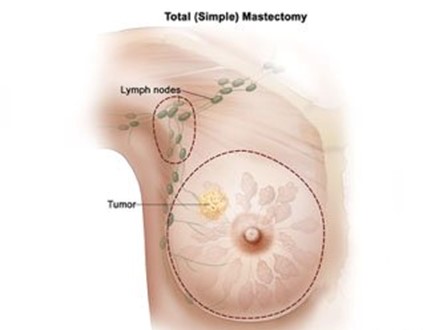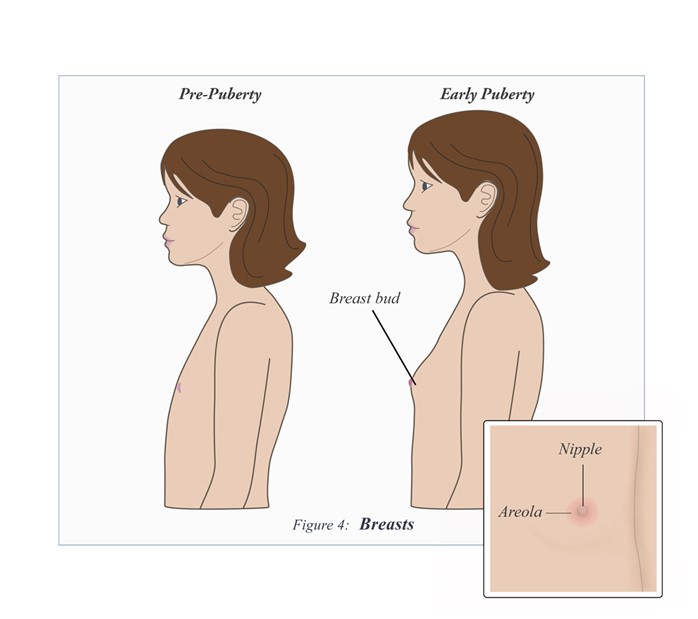A nurse is providing discharge teaching for a client who is postoperative following a simple mastectomy. The client is to begin outpatient radiation therapy the next day. Which of the following instructions about maintaining skin integrity should the nurse include?
Do not apply heat to the area of irradiation.
Use an antibiotic ointment to treat skin breakdown.
Lubricate the skin with hypoallergenic lotion.
Do not wash the area of irradiation.
The Correct Answer is A
Choice A: Do not apply heat to the area of irradiation. This instruction is correct and should be included in the teaching. Applying heat to the area of irradiation can increase inflammation, pain, or burning sensation on the skin. The client should avoid heat sources such as hot water, heating pads, or sun exposure in the area of irradiation.
Choice B: Use an antibiotic ointment to treat skin breakdown. This instruction is not correct and should not be included in the teaching. Using an antibiotic ointment to treat skin breakdown can cause allergic reactions, infection, or interference with radiation therapy. The client should consult with her provider before using any topical products in the area of irradiation.
Choice C: Lubricate the skin with hypoallergenic lotion. This instruction is not correct and should not be included in the teaching. Lubricating the skin with hypoallergenic lotion can cause irritation, infection, or interference with radiation therapy. The client should avoid applying any lotions, creams, or oils on the area of irradiation unless prescribed by her provider.
Choice D: Do not wash the area of irradiation. This instruction is not correct and should not be included in the teaching. Washing the area of irradiation can help prevent infection, remove dead skin cells, and reduce odor. The client should wash the area of irradiation gently with mild soap and water, pat it dry, and avoid rubbing or scrubbing.

Nursing Test Bank
Naxlex Comprehensive Predictor Exams
Related Questions
Correct Answer is D
Explanation
Choice A: Growth spurt is not the correct answer because it is not the first event that occurs in female puberty. The growth spurt is a period of rapid increase in height and weight that usually occurs between 10 and 14 years of age in girls. It is influenced by various factors such as genetics, nutrition, and hormones. Growth spurt usually follows the development of breast buds and pubic hair by about 6 to 12 months.
Choice B: Evidence of pubic hair is not the correct answer because it is not the first event that occurs in female puberty. Evidence of pubic hair is the appearance of coarse, curly, and pigmented hair on the pubic area and around the genitals. It usually occurs between 8 and 13 years of age in girls. It is caused by the increased production of androgens (male hormones) by the adrenal glands and ovaries. Evidence of pubic hair usually follows the development of breast buds by about 3 to 6 months.
Choice C: Onset of menses is not the correct answer because it is not the first event that occurs in female puberty. The onset of menses is the beginning of menstrual cycles, which are regular changes in the female reproductive system that prepare the body for pregnancy. It usually occurs between 10 and 15 years of age in girls. It is caused by the maturation of the hypothalamus, pituitary gland, ovaries, and uterus, which regulate the levels of estrogen and progesterone (female hormones). The onset of menses usually follows the development of breast buds and pubic hair by about 2 to 3 years.
Choice D: Development of breast buds is the correct answer because it is the first event that occurs in female puberty. Development of breast buds is the enlargement and elevation of the nipples and areolas (dark circles around the nipples), which indicate the beginning of breast growth. It usually occurs between 8 and 12 years of age in girls. It is caused by the increased production of estrogen (female hormone) by the ovaries, which stimulates the growth of ducts (tubes) and lobules (glands) in the breast tissue. The development of breast buds is also called thelarche or breast stage 2.

Correct Answer is C
Explanation
Choice A: Bleeding between menses is not the correct answer because it is not a specific clinical manifestation of endometrial polyps. Bleeding between menses is a condition that causes spotting or bleeding at any time other than during the normal menstrual period. It can be caused by various factors such as hormonal imbalance, infection, or pregnancy. It can also occur in some women with endometrial polyps, but it is not a definitive sign of them.
Choice B: Bleeding after intercourse is not the correct answer because it is not a specific clinical manifestation of endometrial polyps. Bleeding after intercourse is a condition that causes bleeding from the vagina or cervix after sexual activity. It can be caused by various factors such as trauma, infection, or cancer. It can also occur in some women with endometrial polyps, but it is not a definitive sign of them.
Choice C: Metrorrhagia is the correct answer because it is a specific clinical manifestation of endometrial polyps. Metrorrhagia is a condition that causes irregular or excessive bleeding from the uterus that is unrelated to the menstrual cycle. It can be caused by various factors such as polyps, fibroids, or cancer. It is a common symptom of endometrial polyps, which are benign growths of the endometrium (the lining of the uterus) that can protrude into the uterine cavity and cause bleeding.
Choice D: Vaginal discharge is not the correct answer because it is not a specific clinical manifestation of endometrial polyps. Vaginal discharge is a fluid that comes out of the vagina and varies in color, consistency, and odor depending on the phase of the menstrual cycle, sexual activity, or health status. It can be caused by various factors such as normal secretions, infection, or inflammation. It is not a common symptom of endometrial polyps, which do not usually affect the vaginal flora or pH.

Whether you are a student looking to ace your exams or a practicing nurse seeking to enhance your expertise , our nursing education contents will empower you with the confidence and competence to make a difference in the lives of patients and become a respected leader in the healthcare field.
Visit Naxlex, invest in your future and unlock endless possibilities with our unparalleled nursing education contents today
Report Wrong Answer on the Current Question
Do you disagree with the answer? If yes, what is your expected answer? Explain.
Kindly be descriptive with the issue you are facing.
